11 Simple and Quick Ways to Mirror Your Phone Screen to Your TV
Do you want to watch your favorite movie on your TV's big screen but don't want to miss any messages on your phone? Let's explore 11 simple and effective ways to mirror your phone screen to your TV at home!
Benefits of Connecting Your Phone to Your TV
Connecting your phone to your TV offers several benefits such as:
- Sharing images and movies from your phone to your TV for your friends or family to enjoy easily.
- Experiencing more exciting visuals with the TV's large, sharp screen and vivid sound.
- Enjoying the "thrill" of playing games, browsing the web, or using Facebook on a big screen instead of your phone or tablet.
- Reducing eye and neck strain when watching on your phone.
How to Check if Your Phone Can Connect to Your TV
To check if your phone can connect to your TV, look for these signs:
- Check if your TV has an HDMI (MHL) port. If it does, your TV supports connecting to your phone via an HDMI cable.
- Check the connections through available applications on the TV.
- Additionally, you can check by reading the detailed information on your TV to see if it supports this feature.
Connecting Your Phone to Your TV Using Cables
1. Through the HDMI Port
You need the following items for the connection.
Connecting an Android Phone Supporting MHL:
- An Android phone supporting MHL.
- A TV with at least an HDMI port (MHL port).
- An MHL cable.
Connecting an iPhone Supporting MHL:
- An iPhone (iPhones do not support MHL).
- A TV with at least an HDMI port (MHL port).
- An MHL cable.
- An adapter.
Connecting a Non-MHL Supported Phone:
- A phone running Android 6.0 or iOS 9.0 or later.
- A universal HDMI cable.
1.1 Steps for Android Phones with MHL Support
Step 1: Connect the smallest end of the cable to your Android phone.
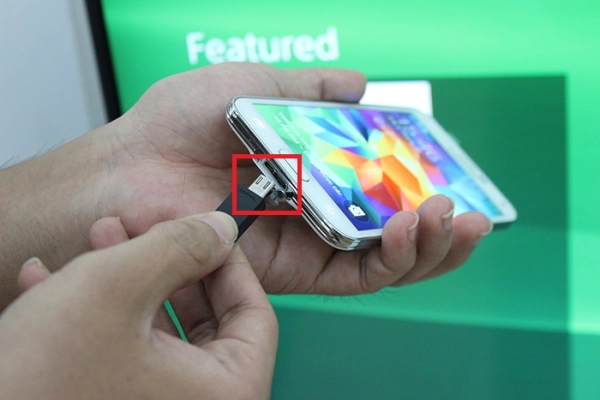
Step 2: Connect the HDMI end of the MHL cable to the TV's HDMI port.
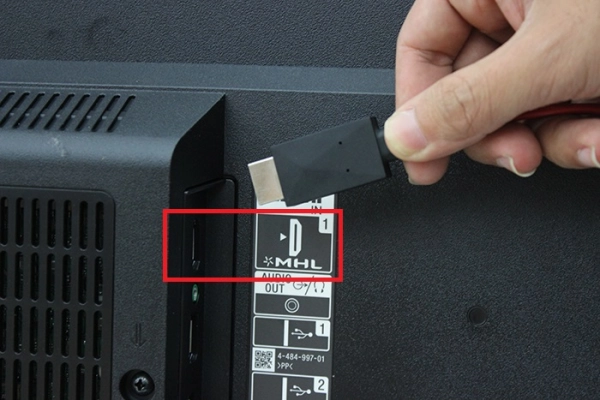
Step 3: Connect the USB end to the TV's USB port.
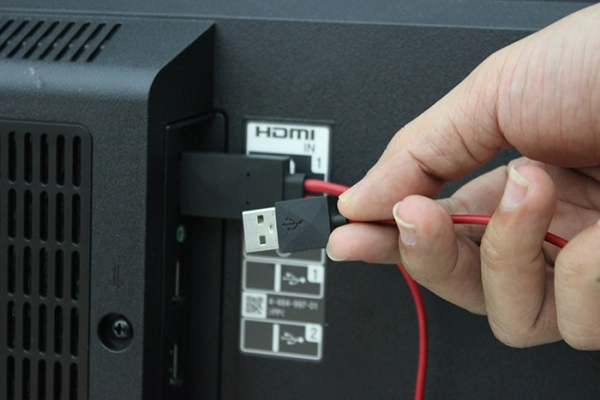
Step 4: Select the input source on the remote.
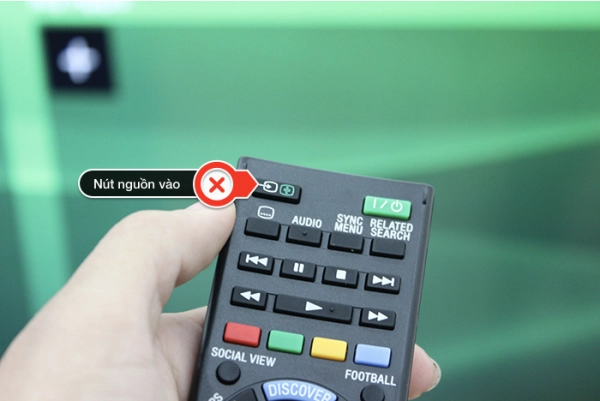
In the INPUTS section on the TV, select the HDMI/MHL signal.
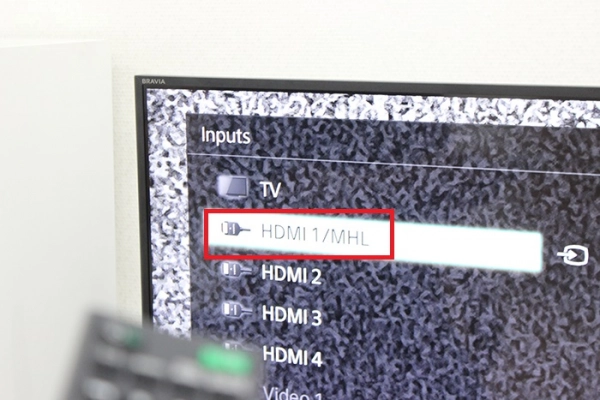
You have successfully connected your Android phone to the TV via the HDMI (MHL) port. The content displayed on your phone will now be shown on the TV screen.
1.2 Steps for iPhones
Step 1: Connect the HDMI end of the MHL cable to the TV's HDMI port > Connect the other end to the adapter.
Step 2: Connect the adapter to a power source via the charging cable.
Step 3: Connect the adapter cable to the iPhone's charging port.
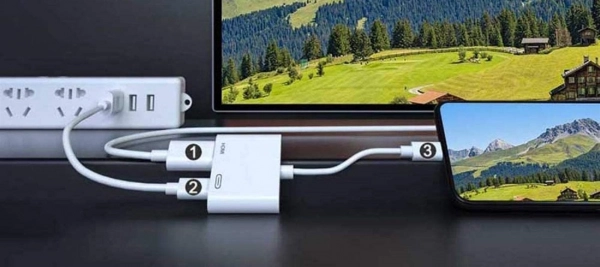
Step 4: Select the input source on the TV remote > Select the connected HDMI port. The connection is now successful.
Note: The MHL cable works best with the HDMI (MHL) port on the TV. If your TV only has a regular HDMI port, it may still connect, but support may be limited.
2. Through the VGA or AV Port
For TVs without an HDMI port, use the AV Composite, AV Component, or VGA port (depending on the TV) to connect your iPhone to the TV.

Step 1: Connect the cable to the phone's charging port.
Step 2: Connect the cable to the AV (with 3 jacks - white, red, yellow or 5 jacks - white, red, green, blue, red) or VGA port on the TV.
Note: Ensure the cables are firmly and correctly plugged into the corresponding color jacks.
Step 3: Press the SOURCE or INPUT button, or the arrow icon on the remote (depending on the TV).
Step 4: On the TV, select VGA or AV, and the image or video you open will be displayed on the TV screen.
3. Through the USB Port
Step 1: Connecting your TV to your phone via a USB cable allows you to open pre-existing image, audio, and video files from your phone on the TV, but it does not support screen mirroring.
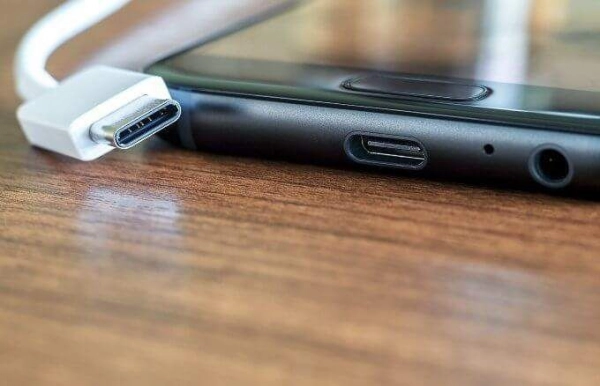
Step 2: Plug one end of the device into the TV's USB port, and the other end into the phone's charging port. On your phone, a dialog box will appear, Use USB for, select File transfer.
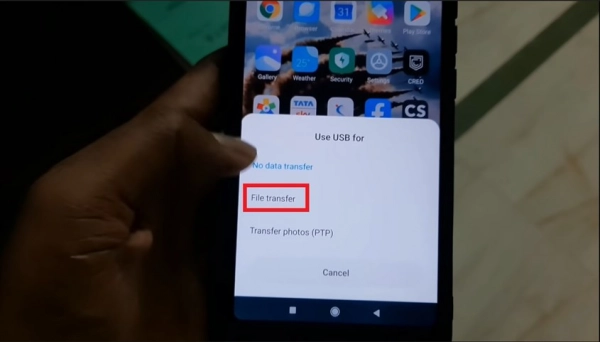
Step 3: Wait for the TV to connect and scan the information on your phone. You can then open files from your phone on the TV screen.
Connecting Your Phone to the TV via Wireless Connection
1. Via the Phone's Infrared Port
Some phone brands like Samsung, LG, HTC, etc., are equipped with infrared ports and pre-installed applications.
TV brands with their own Smart TV control apps include:
- LG Smart TVs: LG TV Remote or LG TV Plus.
- Sony Android TVs: Sony Video & TV SideView.
- Samsung Smart TVs: Samsung Smart View.
- TCL Smart TVs: TCL nScreen.
- Panasonic Smart TVs: Panasonic Remote 2.
For Sony TVs, you can use features like Photo Share or Google Cast. These features allow you to share images from your phone to the TV easily and quickly. Moreover, the Google Cast feature allows you to cast YouTube from your phone to the TV.
2. Via DLNA
DLNA (Digital Living Network Alliance) is a method for sharing images, music, and videos between devices like phones, TVs, printers, disc players, music players, etc., that are DLNA-certified, through a common internet connection without needing any cables.
Requirements:
- First, check if your phone and TV support DLNA. Currently, most Android phones support DLNA. However, iPhones do not have this feature.
- If supported, connect your phone and TV to the same Wifi network.
Step 1: Select the image you want to share to the TV and find the share icon to enable DLNA on your phone.
- Samsung: AllShare, Smart View, or search for nearby devices.
- LG: LG Smartshare
- Sony: Media Server settings or the share icon.
- Oppo: When opening any image, there will be a DLNA icon for you to select and Share.
- Windows Phone: Lumia Play To
- HTC: HTC Connect
Many modern TVs also support DLNA, notably LG Smart TVs, Sony Android TVs, and Samsung Smart TVs.
![]()
Step 2: The list of available TVs will appear; select the TV you want to use.
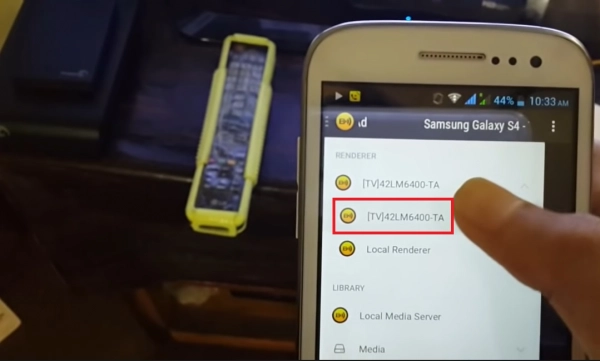
The image will then be transferred from your phone to the TV.
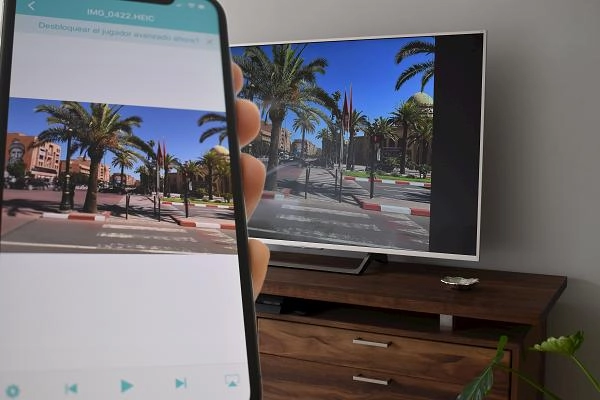
Note: DLNA is quite popular due to its easy connection and high compatibility. However, it has higher latency compared to other wireless connection methods.
3. Via Wifi Direct
Wifi Direct is a connection technology that follows the Wifi standard, allowing two devices to connect easily without many setup steps or an independent router.
Requirements: Both TV and phone must support Wifi Direct.
Step 1: First, go to Settings on the TV.

Step 2: In Settings, select Network and Internet.

Step 3: In Network and Internet, select Wifi Direct.
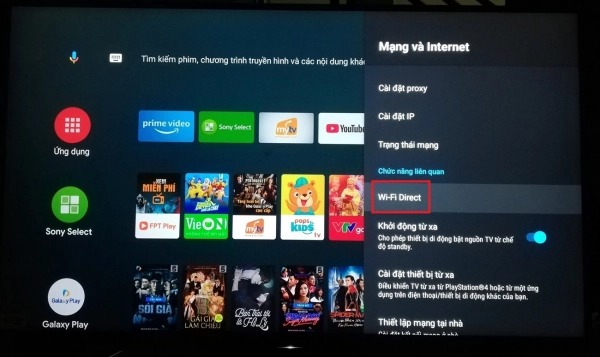
Step 4: Select Wifi Direct Settings.
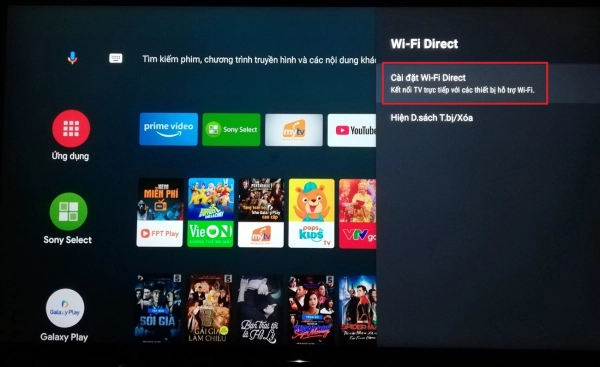
The TV's name will be displayed for easy searching.
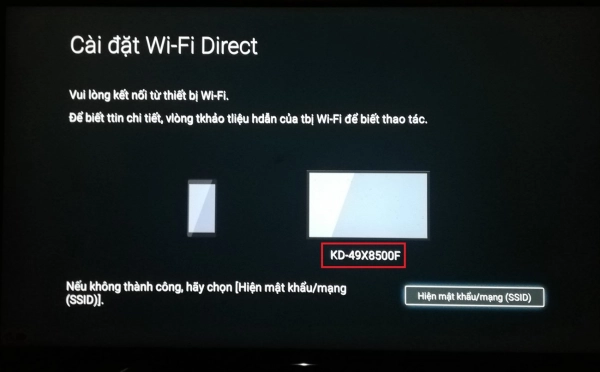
Step 5: On your phone, go to Wifi settings and select Wifi Direct.
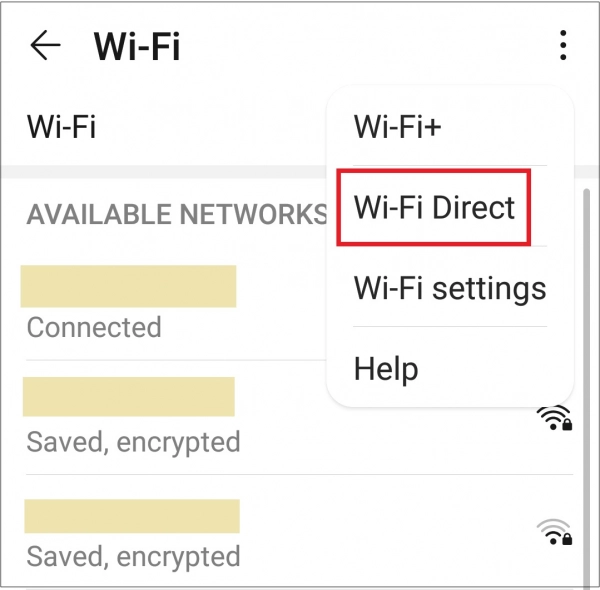
Step 6: Search for the TV name you want to connect to and select it to connect the two devices.
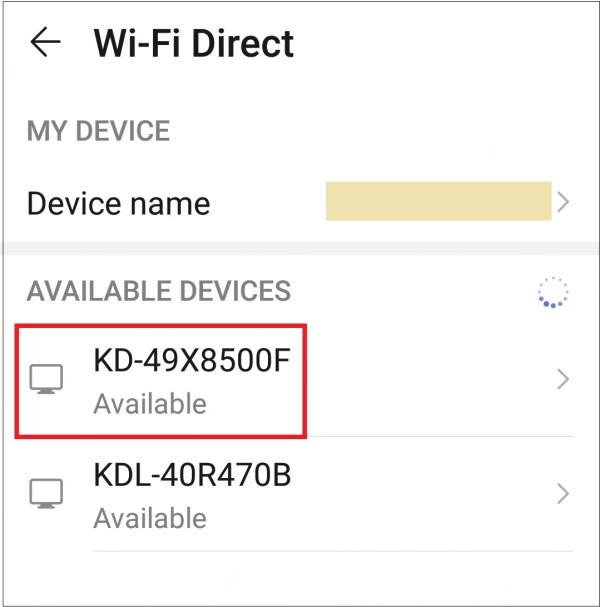
Step 7: When the connection status on the phone shows "Connected," you have successfully connected and can now transfer the content you want to the TV.

If the connection fails, you can select Show password/network (SSID). The TV will display the Wifi name and password for you to use to connect your phone to this Wifi and transfer the content you want to the TV.
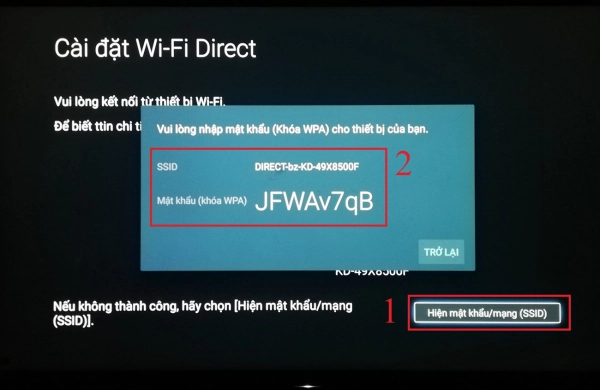
4. Via Miracast
Miracast mirrors the entire screen of your phone to the TV, not just music, videos, images, or files. Miracast is similar to an HDMI connection but uses Wifi instead of cables.
Requirements:
Both TV and phone must support Miracast.
Connect the TV and phone to the same Wifi network.
Step 1: Set up Wifi Direct for your phone and TV.
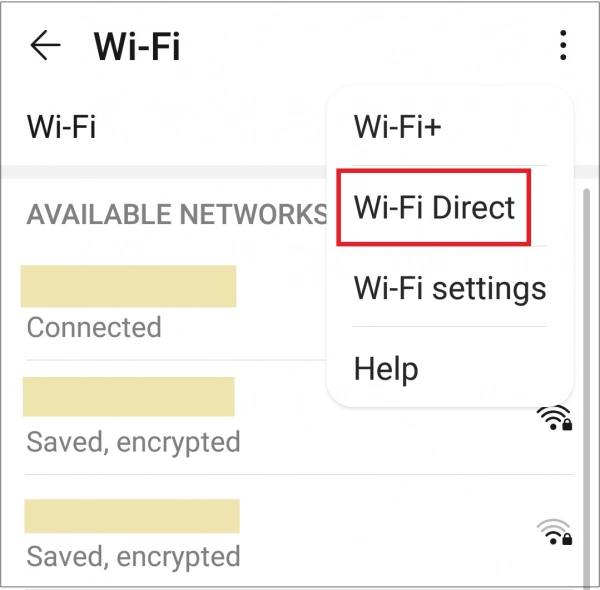
Step 2: Activate the Miracast feature on your phone, and the phone will search for the TV. Select the TV you want to connect to and wait a few seconds for the phone to connect to the TV.
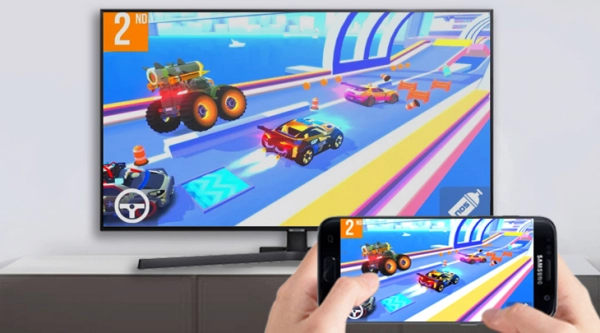
5. Via the Smart View Feature
To use the Smart View app, you must first download it to your phone or the device you want to connect to the TV from Google Play, Samsung Apps, or the App Store.
Ensure the device and TV are connected directly via Wifi or use the same Router.
Step 1: Connect your mobile device/tablet and TV to the same network.
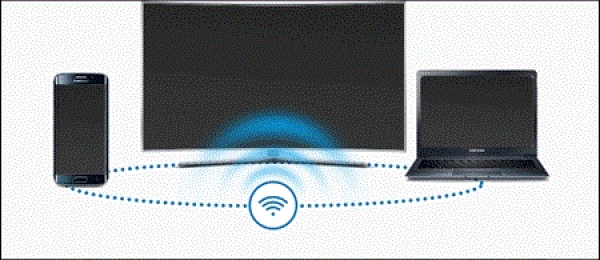
Step 2: Download Samsung Smart View from the App Store, Google Play, or Samsung Galaxy Apps.
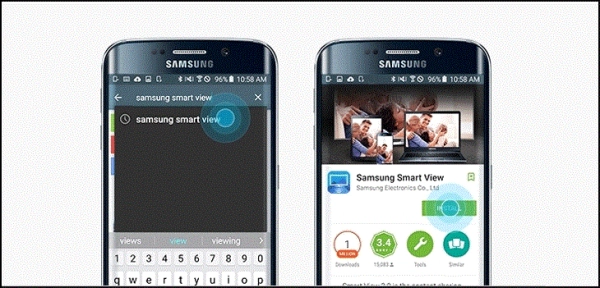
Step 3: Launch the app and follow the steps to set up Smart View.
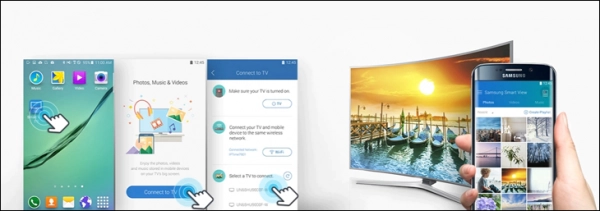
After downloading and installing the Smart View app on your phone or tablet, follow these steps:
- Open the Smart View app; the device will search for and display the available TVs. Select the TV you want to connect to.
- The TV will display a code that you enter on your phone to complete the connection.
6. Via the Screen Mirroring App
Step 1: Open the TV interface and select the Screen Mirroring app.
Step 2: Start Screen Mirroring on your phone.
- Method 1: On your phone, swipe down from the top of the screen and select Screen Mirroring.
- Method 2: Go to Settings, select Connections, select NFC and Sharing, and then select Screen Mirroring and Turn on.
- Method 3: Go to Settings, select Display, and select Cast.
7. Via Manufacturer Apps
To use apps connecting phones to TV brands, check if these apps are available on your TV. If they are, the TV supports this feature. You can use these apps directly on the TV.
If your TV does not support this feature, you need to download the applications to your phone before you can use them:
- Samsung TV: Samsung Smart View.
- LG TV: LG TV Plus.
- Sony TV: Video & TV SideView, Photo Share, Google Cast.
- TCL TV: T-Cast, TCL nScreen.
- Panasonic TV: Panasonic TV Remote 2.
8. Via YouTube
To cast a video from your phone to the TV via YouTube, ensure the following:
- The TV must be a Smart TV or Internet TV with the Google version of the YouTube app (some older models of Skyworth and TCL TVs have customized versions of YouTube that do not support casting).
- The phone has the YouTube app installed.
- The phone and TV are connected to the same Wifi network.
Step 1: Open the YouTube app and select the video you want to cast from your phone to the TV. Then, select the cast icon (a square with a Wifi signal).
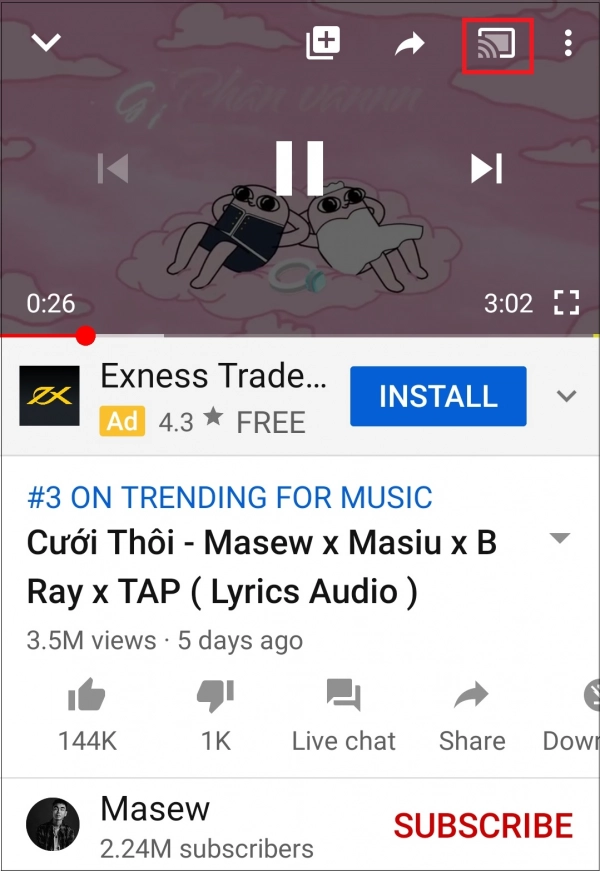
Step 2: The phone will search for the TV; select your TV.
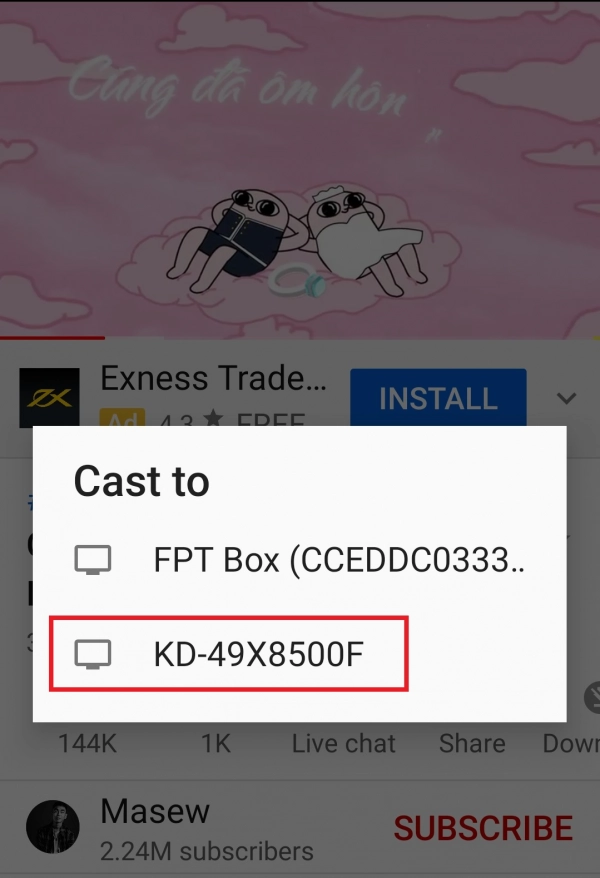
Step 3: The YouTube screen on the phone will display "Connecting..." indicating that the devices are connecting.
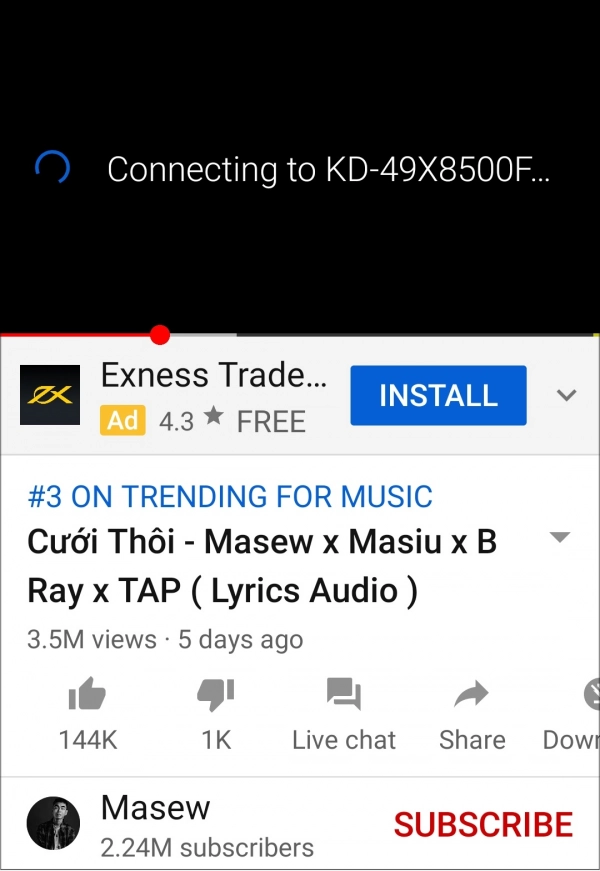
Once successfully connected, the YouTube video from your phone will be cast to the TV.
9. Via AirPlay
AirPlay is a wireless method developed by Apple to connect iPhones and iPads to TVs via Wifi.
Requirements:
- An iPhone, from iPhone 4 or later.
- A TV with an HDMI port.
- An Apple TV (2nd generation or later). Apple TV is a decoder from Apple connected to the TV via an HDMI port. A regular TV connected to an Apple TV becomes a smart TV that can connect to the internet and access apps.
Note: The TV can only connect to one iPhone at a time.
How to Cast from iPhone to TV via AirPlay
Step 1: Connect the Apple TV to the TV by plugging one end of the HDMI cable into the Apple TV and the other end into the TV.
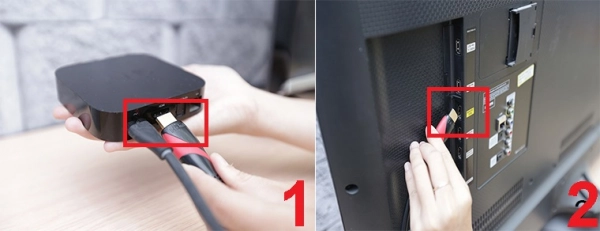
Step 2: Select the source button on the remote and choose the HDMI signal.

Step 3: To connect the TV to the network, go to Settings on the Apple TV.
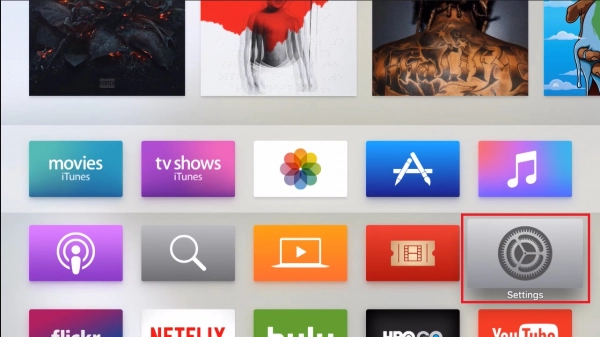
Step 4: Select Network, choose a Wifi network, and enter the password if needed. Ensure the TV and phone are connected to the same Wifi network.
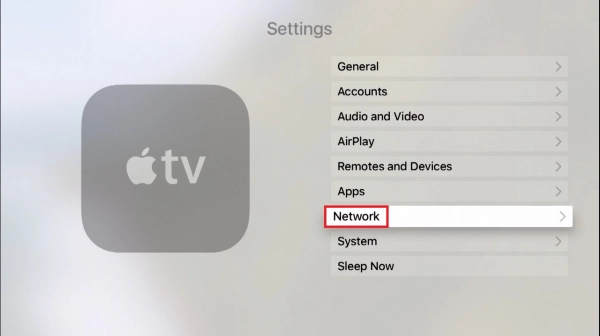
Step 5: In Settings, select AirPlay and then turn it on.

Step 6: On your iPhone, select the Apple TV you want to connect to.
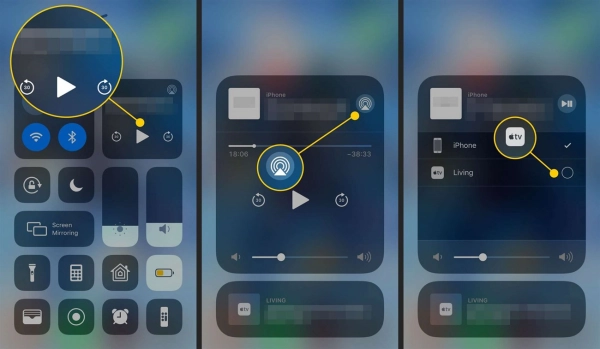
Once connected, the image from your phone will appear on the TV.
Note: If your phone is an iPhone 5 or later, besides sending images, you can mirror your phone's screen to the TV using the Screen Mirroring feature.
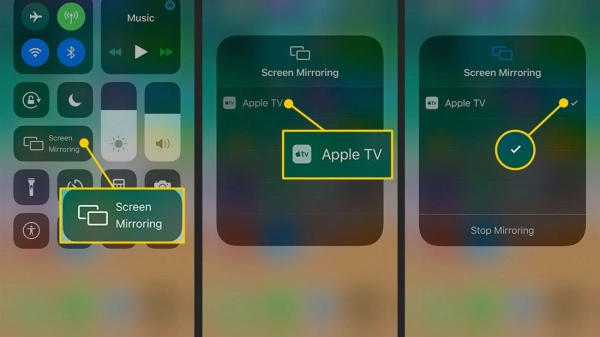
This feature allows the TV to mirror exactly what is displayed on the iPhone screen.
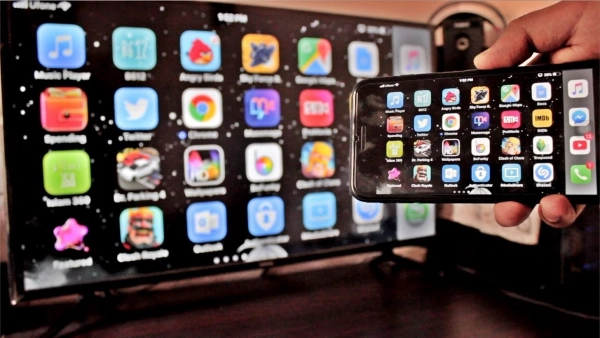
Mirroring your phone screen to the TV is simple and convenient. You can choose the method that best suits your device and needs. If you prioritize the best image quality, use an HDMI or MHL cable. If you prefer convenience and want to avoid cable limitations, try the wireless connection methods.
Submit feedback
Your email address will not be made public. Fields marked are required *
Search
Trend
-
What is Black Myth: Wukong? Detailed Guide on System Requirements and Gameplay
08-21-2024 . 921 view
-
Call of Duty: Black Ops 6 - Intense, Mysterious, and Surprising Warfare
09-02-2024 . 802 view
-
The "End of Life" for Windows 10: A Massive E-Waste Threat and Sustainable Solutions
08-18-2024 . 749 view
-
Casio WS-B1000: The Perfect Blend of Traditional Watch and Smartwatch
08-11-2024 . 672 view
-
Lost All Money by Trusting in "Elon Musk Deepfake": A Cautionary Tale of Deepfake
08-21-2024 . 650 view




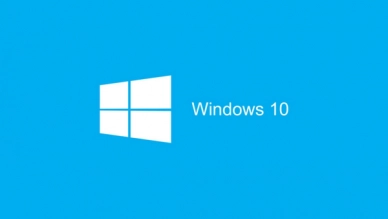
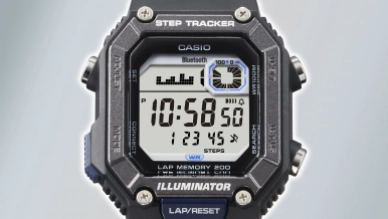
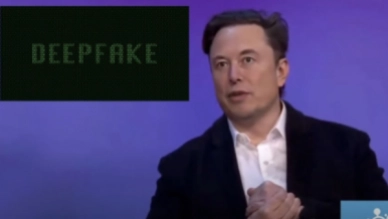
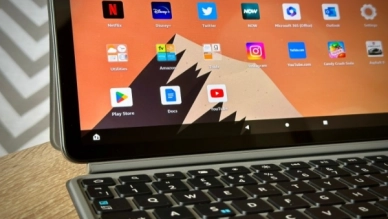
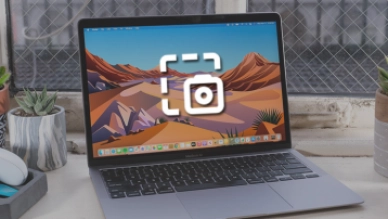

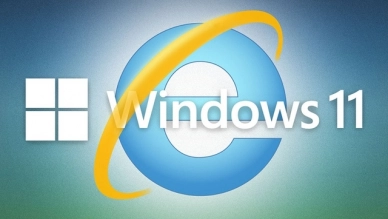
0 feedback